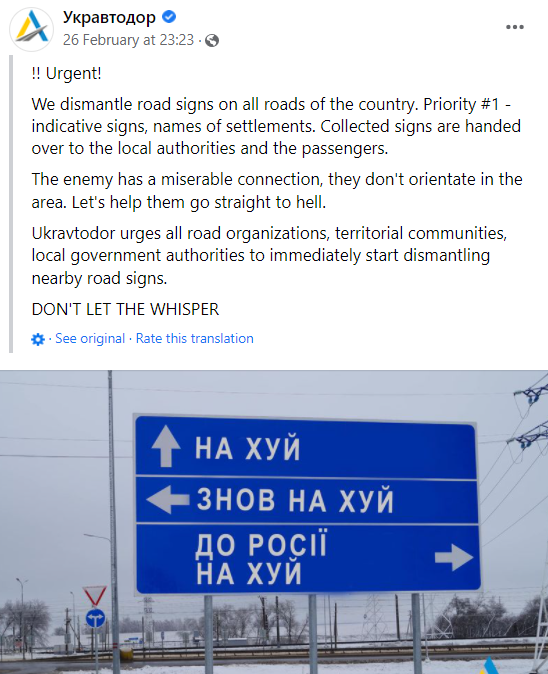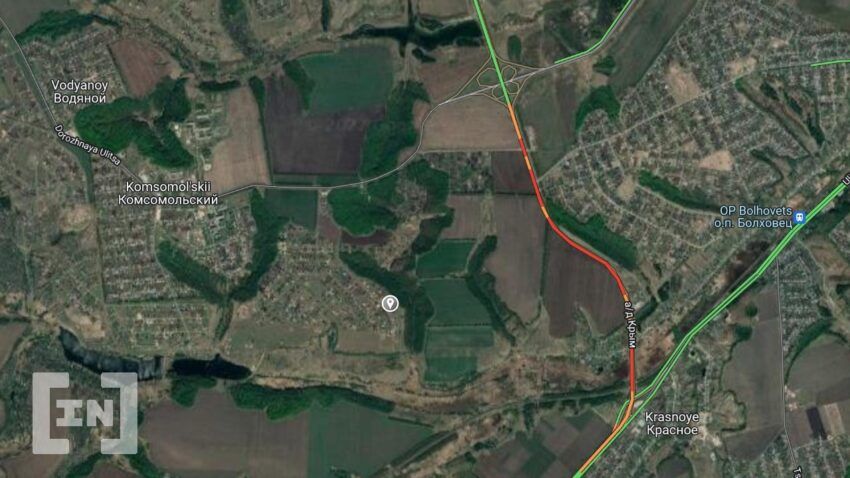Google Maps: It is 3:15 a.m. (CET) on the day of the Russian invasion of Ukraine. Jeffrey Lewis is a professor at the Middlebury Institute in California and a computer expert. He tweets that, according to Google Maps, a huge area of Belgorod, Russia, near the Ukrainian border, is experiencing a huge traffic jam.
Lewis told Motherboard, “I think we were the first to see the invasion. We saw it on the communication app.”
Google Maps: The use of technology to predict the invasion of Ukraine
In short, technology predicted Russia’s attack hours in advance. Hours before Lewis’ tweet, Russian President Vladimir Putin announced a “special military operation” in the Donbas. It is a region of eastern Ukraine that everyone believed would be the location of the first Russian attack. But the increased traffic Lewis recorded using the Google Maps app was actually in another region of Ukraine, north of Kharkiv. The traffic jam slowly stretched across the border.
According to some experts, the data was likely collated from the mobile phones of Russian soldiers participating in the military operation. However, according to US computer experts, the data may have come from the cell phones of civilians trying to flee Ukraine.
Lewis stated, “I think big data companies often don’t want to face squarely how useful their data can be. I mean, it’s cool when we do it, right? It’s maybe less cool if the Russians were able to do something similar to, you know, spotting an offensive from Ukrainians.”
Lewis said, in a Tweet, “I have spent my entire career doing #OSINT and even I think it’s weird that we were able to see the first signs of the invasion using @googlemaps’s traffic layer.”
Professor Lewis wasn’t the only one who noticed the traffic jam.
Google Maps turns off live traffic in Ukraine
Meanwhile, Google announced yesterday that it had disabled its Live Traffic feature in Ukraine to protect users who are trying to escape the war.
Google only said that it had taken measures for the safety of local Ukrainian communities after consulting with local sources, including regional authorities.
This decision came after the Ukrainian authorities called on the population to dismantle all road signs. This was in an effort to hinder the entry of Soviet troops into the territory of Ukraine. Ukravtodor, the government agency responsible for Ukraine’s national road system, wrote in a Facebook post:
“Dismantling of road signs on all roads in the country. Priority No. 1 – direction indicators, city names. Collected signs are handed over to local authorities and road workers. The enemy has a pathetic connection, he has no orientation in the field. Let’s help them go straight to hell.”

Many social networks have blocked access to users associated with the Russian government and institutions. In turn, the Russian government blocked Twitter four days ago.
Google and crypto
Last month, the news broke that Google had formed a new blockchain-based division. Google has been, up until now, unfavorable to the idea of cryptocurrencies. Google, at one time, banned all cryptocurrency-related advertising. This ban included initial coin offerings, exchanges, wallets, and trading advice.
Since then, Google has loosened up, and signed deals with Coinbase and Bitpay, two cryptocurrency exchanges. Now, customers can store cryptocurrency in digital cards. Google still is not accepting cryptocurrency transactions.
Bill Ready, Google’s president of commerce, said in January that crypto is something that they were paying a lot of attention to. “As user demand and merchant demand evolves, we’ll evolve with it.”
Got something to say about Google Maps or anything else? Write to us or join the discussion in our Telegram channel.
Disclaimer
In adherence to the Trust Project guidelines, BeInCrypto is committed to unbiased, transparent reporting. This news article aims to provide accurate, timely information. However, readers are advised to verify facts independently and consult with a professional before making any decisions based on this content. Please note that our Terms and Conditions, Privacy Policy, and Disclaimers have been updated.


